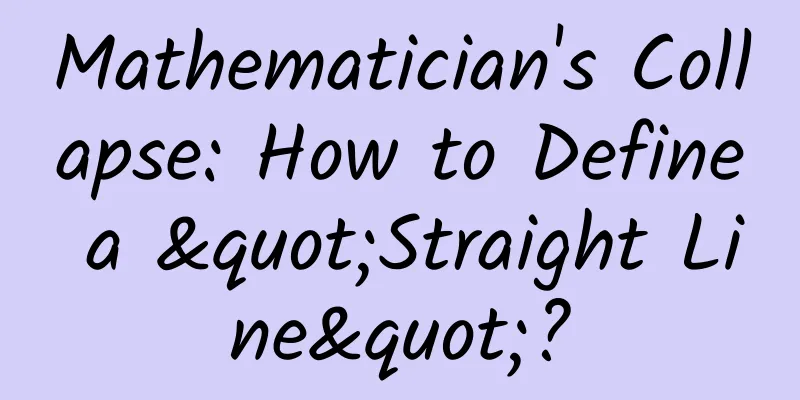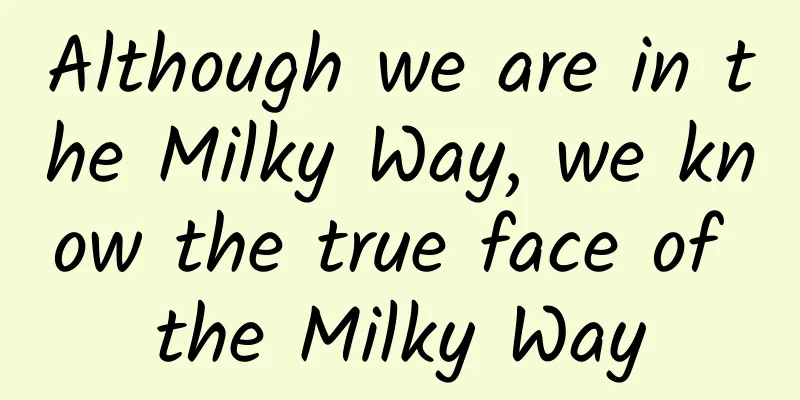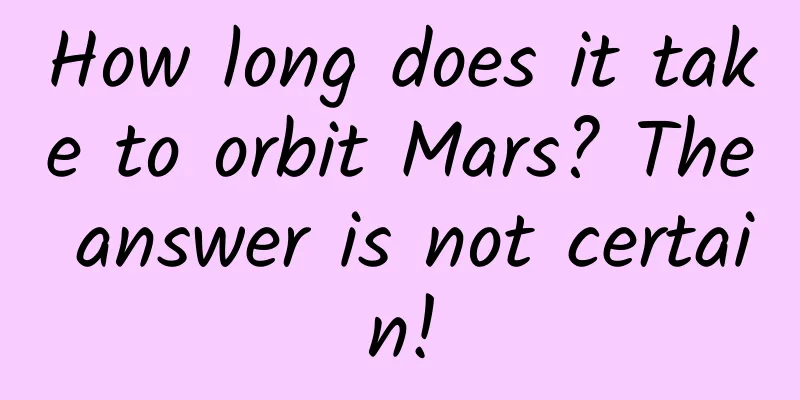Mathematician's Collapse: How to Define a "Straight Line"?

|
In Euclid's Elements, there is a distinct axiom, the fifth postulate, which is now called the parallel postulate: If a line segment intersects two straight lines, and the sum of the interior angles on one side is less than the sum of the two right angles, then the two straight lines will intersect on the side where the sum of the interior angles is less than the sum of the two right angles after continuous extension. To "prove" it, people found that even the definition of the straight line itself was flawed. After spending nearly two thousand years of mathematicians' time, the basic concepts of straight lines, space, etc. have completely changed. We have completely opened up a new world - non-Euclidean geometry, which is the wisdom contained in this complex axiom. This article will introduce some of the early history of the exploration of the fifth postulate, and we can see that the depth of geometry has been revealed since then. This article is authorized to be excerpted from Chapter 6 "The World of Non-Euclidean Geometry" of "Screaming Mathematics: The Amazing Beauty of Mathematics" (Hunan Science and Technology Press). The title and subtitles of this article are added by the editor. Go to the "Fanpu" public account and click "Read the original text" at the end of the article to purchase this book. Click "Reading" and post your thoughts in the comment area. By 12:00 noon on January 2, 2022, we will select 2 comments and give each of them a book. Today’s Weibo benefit, follow @返朴, repost this Weibo and @ a friend. By 12:00 noon on January 2, 2022, we will draw 2 fans and give each of them a copy of "Screaming Mathematics: The Amazing Beauty of Mathematics" (Hunan Science and Technology Press). By Umberto Bottazini Translated by Yu Tingting On November 7, 1919, there was a report in the London Times with the title "Revolution in Science, New Theory of the Universe, Newton's Ideas Completely Overturned". What happened that was so revolutionary? In May of the same year, astronomers Sir Arthur Stanley Eddington (1882-1944) and Frank Watson Dyson (1868-1938, who played an important role in proving Einstein's general theory of relativity) went to an island in Guinea and Brazil respectively to observe the total solar eclipse. On November 6, at a Royal Society meeting that was destined to be remembered in history, they exchanged their observations, and the observations confirmed the prediction of general relativity: the mass of the sun caused the light to bend in the air. News media around the world forwarded this news one after another, and Einstein became famous overnight. "A new great man in world history!" A Berlin newspaper added such words under Einstein's photo. The Times quoted the president of the Royal Society as saying: The discovery of Neptune in 1846 strongly confirmed the correctness of Newton's laws and Euclidean geometry, and general relativity was the most significant event since the discovery of Neptune. Now, "the scientific view of the great factory of the universe must be changed" to come into harmony with "the most important statement, or one of the most important statements, of the human mind" - the theory of relativity. Eddington considered the theory of relativity "one of the finest examples of the power of mathematical reasoning". The view of space predicted by a brilliant mathematician at a fateful moment in the mid-19th century triggered a climax of exciting changes that, two thousand years later, overturned the only theory of Euclidean geometry before Newton, liberated geometers and opened their creative imaginations. What is a straight line? This "cosmic factory" no longer follows Euclidean geometry? Is the geometry of space no longer the geometry of space that Euclid explained to us? The path of light is not a straight line? How is it possible? If you find it unbelievable, it is normal, because your life experience tells you that space follows the laws of Euclid and light travels in straight lines. But what is space? We will hear how Kant defines it in a moment. Before trying to define space, you should know that even Euclid did not do this. Euclid studied the properties of solids in "Elements", but he did not give a definition of space. He just said that a solid is "a thing with width, length and depth", that is, it has three dimensions. From the first few theorems that talk about several planes intersecting in a straight line, or a perpendicular line on a plane, etc., we can intuitively understand what space means. What is a straight line? What a question! What is a straight line, we all think we have learned in school. That's right. Try to define it yourself. If you can give a definition similar to this one for something straight (or not curved), then that's it. You may say that you are not a mathematician. You can console yourself with the fact that this problem has also troubled mathematicians for hundreds of years. It often happens in mathematics that the concepts that seem the most obvious and familiar are the most difficult to define rigorously. The great encyclopedic scholar and mathematician D'Alembert wrote a famous statement. In 1795, he wrote: "The definition and properties of a straight line, like those of parallel lines, are, so to speak, an obstacle and a scandal in the principles of geometry." Of course, because the entire Euclidean geometry is based on these definitions and properties. No wonder that in D'Alembert's eyes, the definition of straight lines and parallel lines became a scandal. D'Alembert added that the common definition of a straight line is the shortest line between two points. If you think about it, you might agree with his definition. But this definition, the French scholar continued, seems more like a property of the line than an original concept. How do you know it is the shortest? Who says there is only one shortest way from one point to another? We agree with the concept of a straight line only because it implies this fact. If we cannot give a satisfactory definition of a straight line, then we cannot give a definition of parallel lines. D'Alembert's hint seems to point the way for us: a line parallel to a straight line is a line connecting two points on the same side of the line and at equal distances from the line, lying in the same plane as the line. To assume that it is true without proof is to assume something outside the definition. We are back to square one, still discussing the concept of distance. In short, "the theory of parallel lines is one of the most difficult difficulties in the principles of geometry," D'Alembert concluded. The troublesome fifth postulate Since about 300 BC, countless geometers have tried to solve this problem. Euclid established the principles of geometry in his Elements. He defined it as "a straight line is a line that connects every point that coincides with it". You may find this definition unclear. He should not have omitted that a straight line is the shortest line between two points, but only Archimedes made this clear. As for parallel lines, Euclid believed that they were lines that lie in the same plane and extend infinitely at both ends but never meet. The first three postulates in the Elements (that between any two distinct points one and only one straight line can be drawn; that a straight line can be extended at any point; that a circle can be constructed given any center and radius) ensure the possibility of constructing basic geometric figures. The fourth postulate is that all right angles are equal. The fifth postulate, the so-called parallel postulate, looks quite unusual at first glance: if two lines in the same plane intersect a third line, and if the sum of the two interior angles on one side is less than the sum of the two right angles, then the two lines, extended infinitely, must intersect on that side. If you draw a diagram on paper, it will become clear at a glance. However, you may think that this postulate is not so obvious at all, and is in any case much more complex in concept than the first four. It is this postulate that d'Alembert called "the obstacle and disgrace of geometry." But it is crucial because the construction of the square, the proof of the Pythagorean theorem, and all the theorems derived from it, are based on this postulate. In the 5th century AD, Proclus wrote in his commentary on the Elements that scholars had long believed that the fifth postulate could be proved by the other four postulates and perhaps a new hypothesis that was simpler and easier to understand than Euclid's postulate. In the following centuries, many mathematicians challenged Euclid's postulate, but they racked their brains and could not come up with a proof. Some of them thought that the concept of parallel lines was intuitive and easy to understand, some thought that we should use the similarity of figures, and some wanted to replace the fifth postulate with the new axiom proposed by Proclus, that is, "No two lines parallel to a given line can be drawn through a point outside the line and not coincident with it". You may have learned its equivalent axiom in the textbook: "On a plane, only one line can be drawn through a point outside the line and parallel to the given line". But if you think about it carefully, you will find that this postulate proposed by John Playfair (1748-1819) at the end of the 18th century is more complicated than Euclid's parallel postulate. They are equivalent, which means that Playfair's postulate can be derived from the fifth postulate, and vice versa. This problem exists with the axioms proposed by many of the "reformers" of Euclidean geometry, from the Persian mathematicians Omar Khayyam (1048-1122) and Nasir al-Din al-Tusi (1201-1274) to John Wallis (1616-1703) in the late 17th century and Adrien-Marie Legendre (1752-1833) in the late 18th century. Other scholars have tried to use proof by contradiction to prove the fifth postulate, such as the Jesuit Girolamo Saccheri (1667-1733). Proof by contradiction is a way of argumentation. If A can be deduced from the antithesis of thesis A, then thesis A is true. Saccheri said: "This seems to be the primary characteristic of all truths, starting from assuming that the opposite of the truth is true, through amazing refutation and inference, we finally return to the truth itself." In his book "Euclidean Geometry Free of All Stains" (1733), Saccheri studied an isosceles quadrilateral with two right angles, that is, ∠A and ∠B are right angles, AD=BC. What about ∠C and ∠D? The first thing that is obvious is that they are equal in size. At this point, you may think of three possibilities: ∠C and ∠D are both right angles, or both are obtuse angles, or both are acute angles. Each of these possibilities (Saccheri calls them hypotheses) is universal, that is, if it applies to a certain isosceles quadrilateral with two right angles, then it is true for all other isosceles quadrilaterals with two right angles. The assumption about right angles is what Euclid called the postulate. ABCD is a rectangle, which naturally satisfies the fifth postulate. Using proof by contradiction, Sakeri proved that "the assumption of obtuse angles is wrong because it destroys the figure itself." There is only the "hostile assumption" of acute angles left, which is the only one that violates Euclid's postulate. In order to defeat it, Sakeri launched a "long battle", filling pages of obscure inferences, and finally came to the conclusion that the assumption "is completely wrong because it contradicts the properties of the straight line." Do you see it? We are back to the starting point: once again involving the "properties" of the straight line. What is this "property"? Isn't Sakeri avoiding admitting that the conclusion derived from the assumption contradicts people's initial feelings when they see the straight line? In this "battle", Saccheri expounded and proved a bunch of unexpected new theorems, so some later generations called him the "pioneer" of non-Euclidean geometry. But Saccheri was not another Columbus. Columbus was looking for a new route to India, but he discovered the New World, while Saccheri firmly believed that he had successfully conquered the "hostile hypothesis" of acute angles and was sure that the place he arrived was "India". Therefore, Paul Valéry (1871-1945, French writer and poet)'s ironic surprise at "this Saccheri" was inappropriate: "Saccheri slightly opened the door for a bold and innovative geometry in the future, but did not admit it" because in fact "he was a complete Jesuit". But Saccheri was not "Jesuit-like" in his propositions, but had a "Ptolemaic" belief in Euclidean geometry. In any case, although Saccheri was very confident in his arguments, he did not remove any stains from Euclidean geometry. If the fifth postulate was a stain on the garment of Euclid’s science of space, the stain remained. However, it was the Jesuit’s efforts that, in Imre Tott’s apt phrase, “made geometry impure.” It would take more than a century for the invidious fifth postulate, which made geometry impure, to be publicly articulated and recognized by the world. More than 3D In Göttingen, Georg Simon Klügel (1739-1812) studied Saccheri's work carefully. In 1763, he discussed Saccheri's work in a paper. What was his conclusion? "For the time being", facing such a "defender of pure truth", we can at least say that "no sane person will deny Euclid's postulates". Yes, for the time being. Inspired by Klügel's paper, Lambert followed in Saccheri's footsteps and published On Parallelism (1776). This Lambert was the same Lambert who proved that π was an irrational number. Mathematicians express the size of angles in radians, and the number π also represents the degree of a straight angle, that is, 180°. Like Saccheri, Lambert tried to disprove the acute angle hypothesis but failed. This time he imagined a quadrilateral with three right angles and argued for the fourth angle. One hundred years later, the concept of space has not changed. In Dostoyevsky's work, Ivan Karamazov said in a long conversation with his brother Alyosha: "If God exists and indeed he created the world, then as we know, God created the world according to Euclidean geometry and created the human mind with only the concept of three-dimensional space." But since ancient times, people have known that spherical geometry does not violate the axioms of Euclidean geometry, and Lambert's interpretation also shows this. At that time, the news of non-Euclidean geometry should have reached St. Petersburg, because Ivan went on to say: "But there have been, and even now are some geometers and philosophers, including some of the most outstanding scholars, who doubt whether the whole world, or to put it more broadly, the entire universe, was really created only according to Euclidean geometry. They even questioned the parallel postulate and boldly guessed that two parallel lines that Euclid believed would never intersect could actually intersect at a certain point after being infinitely extended." Ivan was confused. This last way of defining parallels is what Stendhal's Henri Bruel learns in an "old catechism", but it has nothing to do with the famous and controversial fifth postulate. |
<<: Second spacewalk! Chinese astronauts will celebrate New Year's Eve in space for the first time!
>>: 2021, we looked at these photos again and again
Recommend
How to improve ROI? Internet marketing combination methodology!
This article will focus on the general Internet m...
How to attract 600 million low-end users?
In 2019, the concept of sinking markets was extre...
Seriously, what time does it take to go to bed to be considered staying up late?
Reviewer of this article: Chen Haixu, Deputy Dire...
This stone forest is a bit strange: Three Ordovician stone forests in my country
In the Karst Grand View Garden, Stone Forest is a...
Don't tear off the sticker on the bottom of the thermos cup!!! Otherwise...
Today I will tell you a cold but warm knowledge: ...
Don't treat "Chinese Valentine's Day" as "Valentine's Day" anymore! I am silent knowing the truth...
In recent years, every Chinese Valentine's Da...
Google's ambition: Android 5.0 aims to enter the enterprise market
Apple has dominated the enterprise mobile market ...
Are ants supporters of "feminism"? What is the real ant society like...
Ants are one of the most fascinating social biolo...
Hahahaha! Why does your expression look so ugly when you're asleep?
Everyone must have had ugly photos of themselves ...
Electric Technology Car News: It is said that it is difficult to get a Shanghai license plate, but BYD Tang and Roewe eRX5 can easily get it
It seems not difficult to buy an SUV for less tha...
From 100,000 to 10 million: How to rapidly increase the number of App users
This article is an experience sharing by Li Jianh...
How can activities attract more users? I summarized these 4 key points
When running events or conducting marketing activ...
How to build a brand at zero cost?
For those of us who work in marketing, the shocks...
Great! Scientists have invented a new fabric that automatically cools you down when you wear it
Summer has arrived as promised. Every corner of t...
Hot topic! Is the crunchy Gongcai in hot pot actually dried lettuce?
Recently, the topic #Gongcai is dried lettuce# ha...









